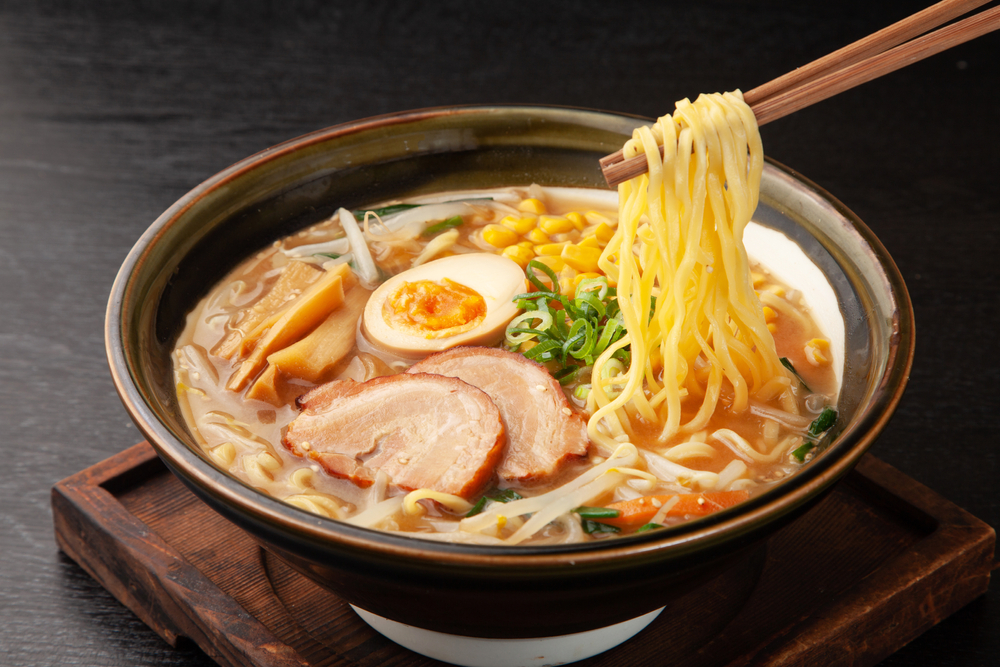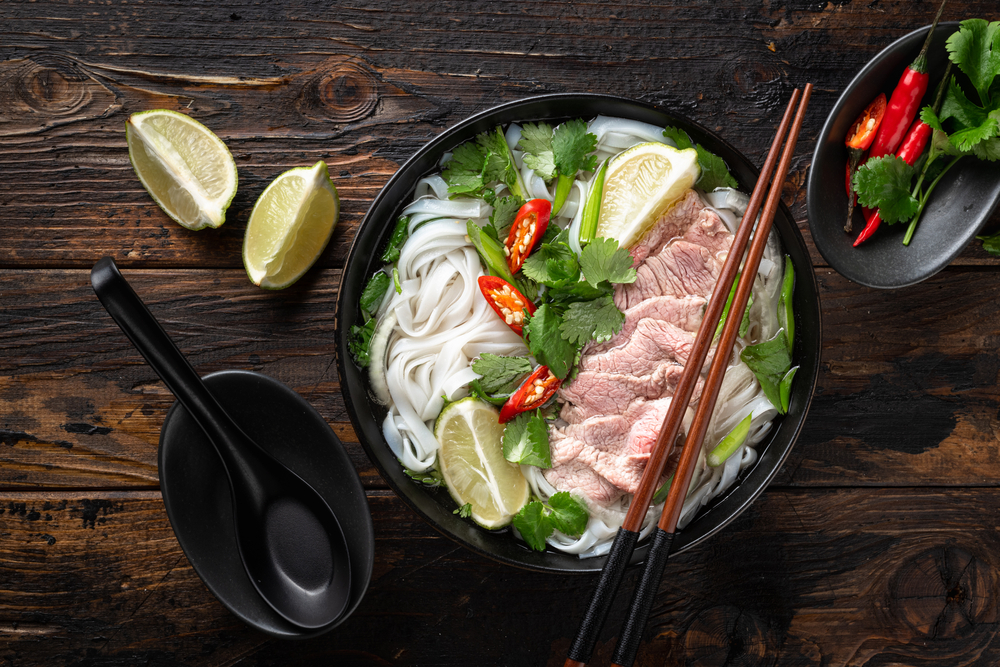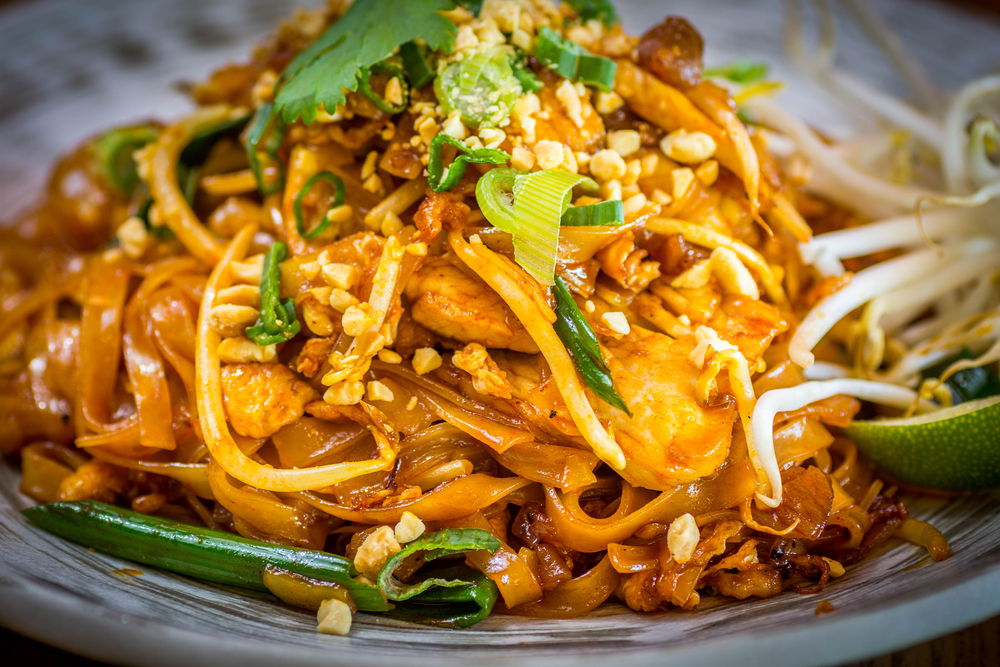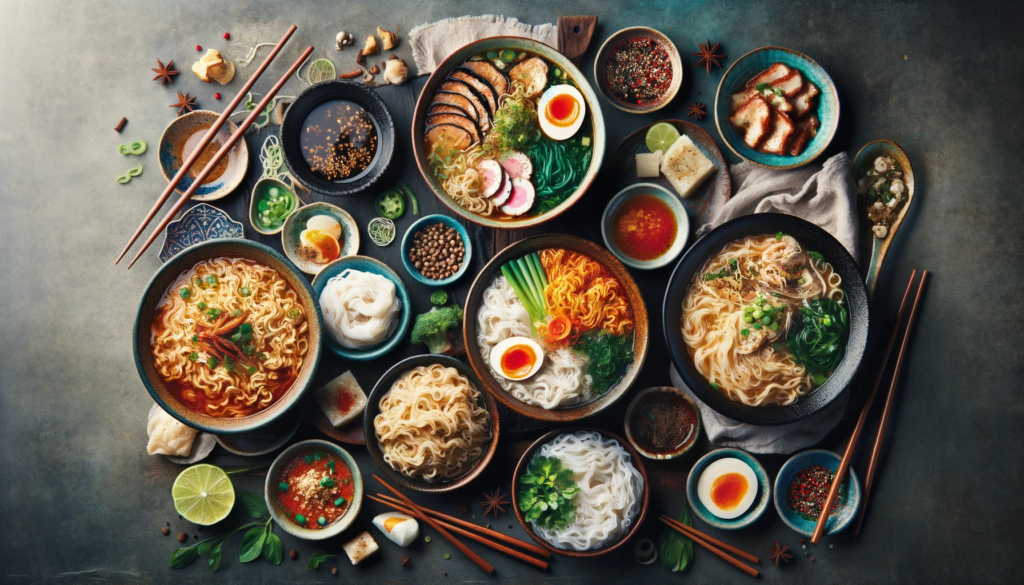Delving into the World of Ramen
Discover the rich variety and cultural significance behind one of Japan’s most beloved noodle dishes. Ramen, originating from China, has become a phenomenal part of Japanese cuisine. Its evolution through the ages has produced unique flavors and techniques to Japan’s geographical and cultural landscape. From the bustling ramen shops in Tokyo to the intimate spaces in Kyoto, this dish represents a microcosm of Japan’s dedication to culinary perfection.
What Are the Different Types of Ramen Broth?
Ramen broth is the soul of the dish and varies considerably across regions. The four main types include Shoyu (soy sauce-based), Shio (salt-based), Miso (fermented soybean-based), and Tonkotsu (pork bone-based). Each presents a distinct flavor profile; from the deep, meaty complexity of Tonkotsu to the lighter, clearer Shio. The process to make these broths often involves simmering ingredients for hours, which imparts deep umami flavors and rich mouthfeel, crafting a base that harmoniously interacts with noodles, toppings, and additional seasonings.
Essential Toppings Every Ramen Enthusiast Should Try
Every bowl of ramen is adorned with an array of toppings that contribute texture and flavor. Essentials include Chashu (braised pork belly), Nori (seaweed), Menma (bamboo shoots), and a marinated soft-boiled egg. Green onions and bean sprouts add a fresh crunch, while corn and butter introduce a note of sweetness and richness. All these elements are integral to the overall appeal of ramen, creating a harmony between the noodles and the broth they are so gently nestled in.

Regional Ramen Specialties in Japan
Ramen varies tremendously from region to region in Japan. For instance, Sapporo is famous for its rich miso ramen often topped with corn and butter, while Hakata boasts its Tonkotsu with thin, straight noodles. Tokyo style carries a soy-flavored broth with thicker noodles, and Okinawa presents a distinct, porky version called Soki Soba, featuring bone-in pork ribs. Exploring regional varieties provides a deeper understanding of the country’s culinary diversity and regional tastes.
Cooking Techniques for Authentic Ramen at Home
Crafting authentic ramen at home can be a rewarding endeavor. Key techniques include achieving a clear, flavorful broth, often requiring patient simmering and proper skimming. Handmade, or carefully selected store-bought noodles, greatly enhance the dish. Precision in cooking the noodles to the right ‘bite’ ensures the perfect texture. Finally, assembling the bowl with carefully balanced toppings adds visual appeal and layers of flavor, bringing the experience of a Japanese ramen-ya to your own kitchen.
The Flavorful Tradition of Pho
Unravel the aromatic layers of pho, Vietnam’s staple noodle soup, and its variations across the regions. Pho is a symphony of flavors, delivering a comforting and refreshing meal at any time of the day. Beginning as a simple peasant dish, it has transcended its humble origins to become an international sensation. It captures the essence of Vietnamese cooking philosophy: a balance of flavors, textures, and fresh ingredients that harmonize in a single bowl of noodle soup.

The Secret to Mastering Pho Broth: Ingredients and Simmering Tips
The foundation of pho is its broth, traditionally made with beef bones simmered for hours with spices such as star anise, clove, and cinnamon. Charred onions and ginger bring a depth of flavor, while careful skimming ensures a clear, consomme-like liquid. A gentle simmer never going into a full boil is crucial for maintaining clarity and developing the delicate profile that distinguishes pho from other beef broths. This complex yet light broth is then poured over flat rice noodles and finished with herbs and meat.
Beef vs. Chicken Pho: Uncovering the Nuances
The debate between beef (pho bo) and chicken (pho ga) pho can be quite personal for pho aficionados. Pho bo boasts a robust broth, typically with more depth due to the bone marrow and variety of beef cuts used. In contrast, pho ga presents a lighter, often more delicate broth with subtler flavors deriving from slow-cooked chicken. Each has its place in Vietnamese cuisine, and choosing between them can depend on mood, time of day, or a simple preference for one protein over the other.
Vegetarian Pho: Adapting Tradition for Plant-Powered Diets
Adapting pho to fit a vegetarian or vegan diet allows for innovation while respecting the dish’s core principles. The broth can be created from charred vegetables and aromatic spices, yielding a complex, umami-rich liquid miming the original’s savory base. Toppings include tofu, mushrooms, and a variety of vegetables, providing a satisfying and nourishing alternative without sacrificing the essence of traditional pho. The key is to focus on creating depth and contrast in flavors and textures.
Navigating Pho Garnishes for the Perfect Bowl
Garnishes play a pivotal role in the pho experience. A plate of fresh herbs, such as cilantro, Thai basil, and mint, accompanies each bowl. Slices of lime offer a burst of acidity, while bean sprouts add crunch. Jalapenos or bird’s eye chilies cater to those craving heat, and hoisin and Sriracha sauces are often served on the side for custom seasoning. The diner’s interaction with these garnishes not only tailors the flavor profile to personal taste but also completes the overall sensory experience of pho.
Pad Thai: Thailand’s Iconic Stir-Fried Noodles
Embark on a culinary journey through the textures and flavors that make Pad Thai a global favorite. Originating from the streets of Thailand, this stir-fried noodle dish has captivated diners worldwide with its unique balance of sweet, sour, savory, and spicy elements. With a history of adaptation and innovation, Pad Thai represents Thailand’s cultural melting pot, incorporating influences from Chinese cooking techniques to Western tastes, resulting in a quintessentially Thai dish.

A Breakdown of Pad Thai Ingredients: What Makes It Unique?
Pad Thai’s uniqueness lies in its carefully chosen ingredients that create a harmonious blend of flavors. Rice noodles provide a chewy base, while a sauce made from tamarind, fish sauce, sugar, and chili adds the key sweet, sour, and savory notes. Proteins such as shrimp or tofu, egg, and a selection of vegetables like bean sprouts and green onions are stir-fried together. Crushed peanuts and a wedge of lime for squeezing on top finish the dish, offering a textural contrast and a burst of brightness.
Regional Twists on Classic Pad Thai
Despite its widespread popularity, Pad Thai takes on various local forms across Thailand. Some regions add a touch of curry powder for a hint of complexity, whereas others prefer a more pronounced peanut flavor. Coastal areas might showcase an array of seafood, reflecting local abundance. These regional adaptations highlight the diversity of Thai cuisine and the adaptability of Pad Thai, which can absorb and reflect the local palette while maintaining its fundamental identity.
Understanding the Balance of Sweet, Sour, and Savory in Pad Thai
The core appeal of Pad Thai is the delicate balance between sweet, sour, and savory flavors. The tanginess of tamarind paste, the sweetness from palm sugar, and the umami of fish sauce are the triad at the heart of its sauce. The skill in making Pad Thai lies in adjusting these elements to achieve a harmonious flavor that neither overpowers nor underwhelms. Lime juice and chili flakes allow diners to fine-tune this balance to their preference after serving, ensuring each bite is a personalized taste sensation.
Tips for Creating Restaurant-Quality Pad Thai at Home
Creating restaurant-quality Pad Thai at home involves mastering a few key techniques. Use a well-seasoned wok to achieve the “wok hei,” the smoky flavor characteristic of stir-frying on high heat. Pre-soaking the rice noodles ensures they remain firm and don’t clump together. Prepare and measure all ingredients beforehand since cooking is fast and furious. Lastly, taste and adjust the seasoning of your sauce during cooking to perfectly balance the sweet, sour, and savory notes.

Noodle Pairings and Accompaniments
Elevate your noodle experience with the perfect beverage pairings and complementary dishes. Whether you’re indulging in a spicy bowl of ramen, a fragrant pho, or a tangy Pad Thai, the right accompaniments can enhance and harmonize your meal. From savory sides to refreshing drinks and even sweet indulgences, the art of combination takes your noodle delight to greater heights, ensuring a well-rounded and fulfilling culinary adventure.
Choosing the Right Drinks to Accompany Your Noodle Dish
The selection of a drink to accompany your noodle dish greatly impacts the overall dining experience. For heartier broths like Tonkotsu ramen, consider a crisp lager or pilsner to cleanse the palate. A light-bodied Pinot Grigio pairs well with the aromatic spices of pho, while a sweet and sour tamarind juice complements the flavors of Pad Thai. Tea, particularly green or jasmine, offers a soothing counterpart that helps cut through the richness of any noodle dish.
Side Dishes that Enhance the Noodle Experience
Side dishes can provide a refreshing contrast or add depth to your noodle meal. For Ramen, a side of Gyoza dumplings or a tangy Japanese cucumber salad can change texture and flavor. Pho pairs beautifully with fresh spring rolls, dipping into the same herbs and bringing in the crunch of vegetables. With Pad Thai, a side of spicy papaya salad (Som Tum) can complement its zesty and spicy taste, enhancing the main dish with its bright, bold flavors.
Desserts that Pair Well with Ramen, Pho, and Pad Thai
After a satisfying noodle meal, a well-chosen dessert can be the perfect conclusion. The sweetness and creaminess of a matcha ice cream or a mochi assortment can punctuate a ramen meal with a contrasting taste and texture. For a light finish after pho, consider a tropical fruit plate or mango with sticky rice to maintain the freshness. And a coconut-based dessert, like coconut pudding, pairs wonderfully with the bold flavors of Pad Thai for a creamy and indulgent finish.
Exploring Noodle Culture and Etiquette
Noodle dishes are steeped in tradition; learn the cultural do’s and don’ts while enjoying them. From the respectful slurping in Japan to the communal eating practices in Vietnam, noodles are more than food; they are a cultural experience. Whether you’re dining alone or with others, understanding and appreciating these customs can enhance your meal and offer a deeper connection to the dishes you enjoy.
The Art of Noodle Slurping: Cultural Insights and Practices
In Japan, the act of slurping noodles is not only commonplace but encouraged. It signifies appreciation for the meal and helps cool down the hot noodles as you eat them. Slurping enhances the flavors and allows for a mix of broth and noodles in each bite. It’s a practical technique with roots in Japanese dining etiquette, demonstrating the diner’s pleasure and the chef’s skill.
Table Manners and Etiquette for Noodle Soups Across Countries
Each country has its own set of noodle soup etiquettes. In Vietnam, using your spoon for sipping broth and chopsticks to maneuver noodles and toppings is polite. A communal dining style often accompanies pho, symbolizing family and sharing. In Thailand, while eating Pad Thai, it’s considered good form to use utensils, typically a fork and spoon. Paying attention to these cultural nuances acknowledges respect for the cuisine and its culinary traditions.
Noodle Festivals and Celebrations Worth Traveling For
Noodle festivals and celebrations are an epicurean dream, taking place in various countries known for their noodle dishes. Japan’s ramen festivals offer a chance to taste varieties from all over the country. Vietnam’s Pho festivals celebrate the national dish with enthusiasm, inviting locals and tourists alike to partake. Thailand hosts vibrant events like the Bangkok Street Food Festival, where Pad Thai and other delicacies can be enjoyed. These festivals are not just about food; they are an immersion into a culture’s rich culinary landscape.
FAQs About Ramen, Pho, and Pad Thai
Find answers to those burning questions noodle enthusiasts often ask about their favorite dishes. How does one distinguish between the intricate flavors of ramen, pho, and Pad Thai? Can traditional noodle recipes cater to those with dietary restrictions like gluten intolerance? The mysteries and intricacies of these beloved noodle dishes are unraveled here, providing both novice and veteran noodle lovers with helpful insights.
What is the Difference Between Ramen, Pho, and Pad Thai?
Ramen is a Japanese noodle soup with a range of broths and toppings, renowned for its richness and depth. Pho is a Vietnamese noodle soup defined by its fragrant broth and emphasis on fresh herbs. On the other hand, Pad Thai is a stir-fried Thai noodle dish characterized by its balance of sweet, sour, and savory flavors. While all are noodle-based, their distinctions lie in their preparation, ingredients, and the specific flavor profiles unique to their country of origin.
Can Traditional Noodle Recipes be Made Gluten-Free?
Yes, traditional noodle recipes can be adapted for a gluten-free diet. Many Asian noodles, such as those made from rice, tapioca, or mung bean, are naturally gluten-free. Soy sauces and other flavorings can be substituted with gluten-free alternatives. It’s also essential to avoid cross-contamination during the preparation and cooking process for those with celiac disease or severe gluten sensitivity.
How Can I Tell if I’m Eating Authentic Pho, Ramen, or Pad Thai?
A few key attributes can often gauge the authenticity in these noodle dishes. For pho, the clarity and depth of the broth, along with the use of fresh herbs, are telltale signs. Authentic ramen should have a rich, well-developed broth and properly prepared toppings. For Pad Thai, look for the balance of sweet, sour, and savory flavors, and the distinct taste of tamarind. Traditional preparation methods, ingredient sourcing, and the chef’s expertise also play significant roles in determining the authenticity of these dishes.
Where can you find the best ingredients for noodles online?
Finding the right ingredients is crucial for creating authentic noodle dishes. Online specialty stores and Asian markets often have various ingredients specific to ramen, pho, and Pad Thai. Look for reputable suppliers who import directly from the dish’s country of origin or cater to the Asian community. Reviews and recommendations can also help determine the best online sources for high-quality, authentic ingredients.
